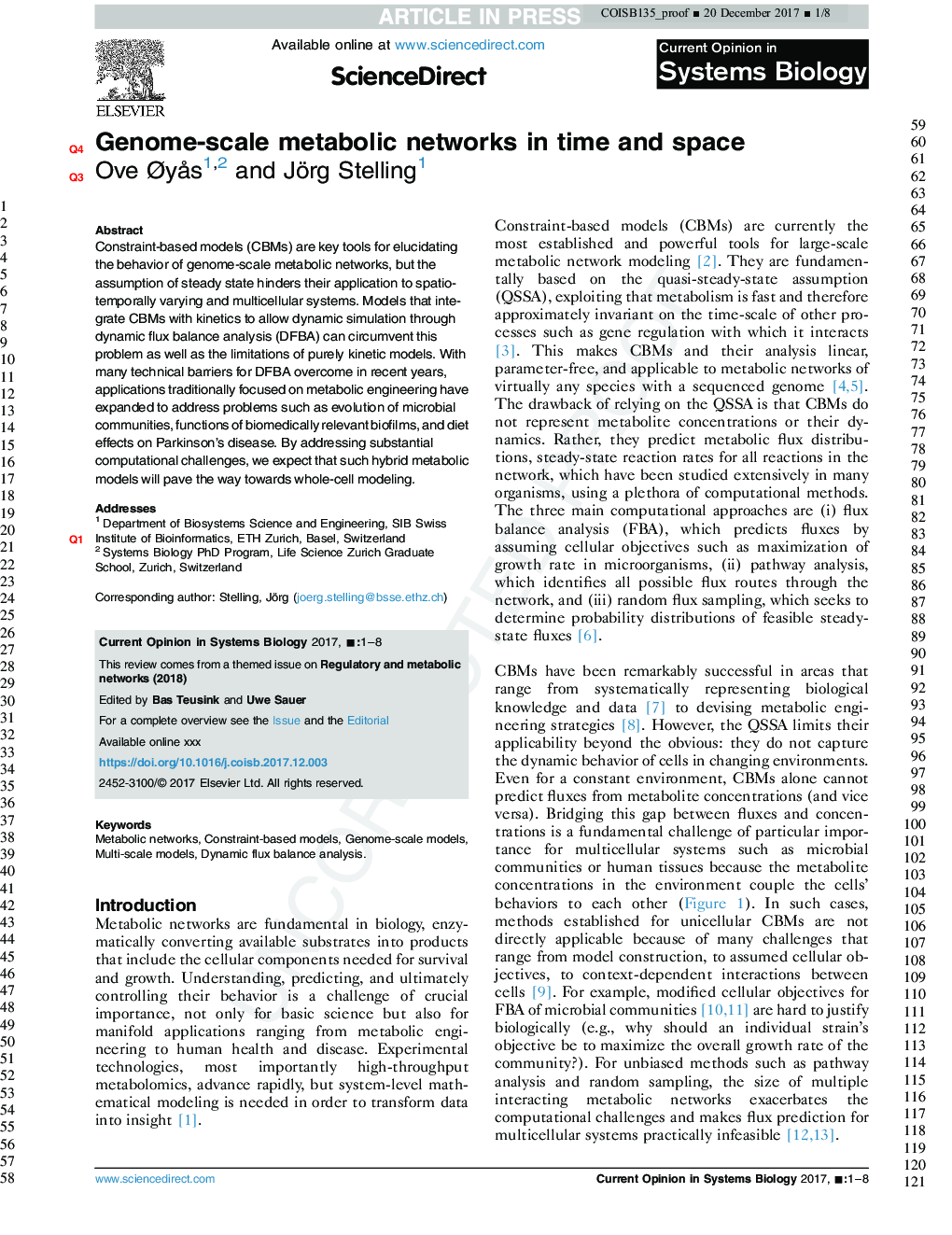| Article ID | Journal | Published Year | Pages | File Type |
|---|---|---|---|---|
| 8918044 | Current Opinion in Systems Biology | 2018 | 8 Pages |
Abstract
Constraint-based models (CBMs) are key tools for elucidating the behavior of genome-scale metabolic networks, but the assumption of steady state hinders their application to spatiotemporally varying and multicellular systems. Models that integrate CBMs with kinetics to allow dynamic simulation through dynamic flux balance analysis (DFBA) can circumvent this problem as well as the limitations of purely kinetic models. With many technical barriers for DFBA overcome in recent years, applications traditionally focused on metabolic engineering have expanded to address problems such as evolution of microbial communities, functions of biomedically relevant biofilms, and diet effects on Parkinson's disease. By addressing substantial computational challenges, we expect that such hybrid metabolic models will pave the way towards whole-cell modeling.
Related Topics
Physical Sciences and Engineering
Computer Science
Computer Science (General)
Authors
Ove ÃyÃ¥s, Jörg Stelling,
